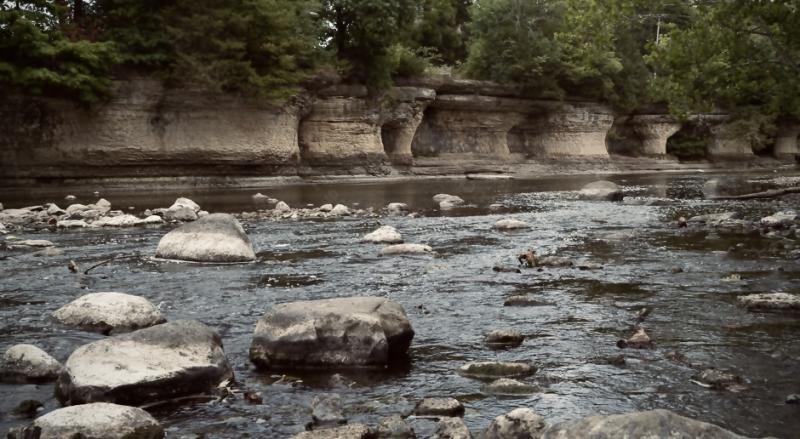A place of legend, located just four miles southeast of Peru, the Seven Pillars of the Mississinewa is a site that holds both historical significance, majestic beauty, and folklore that dates back centuries.
The tall, natural pillars along the river's edge once served as an extremely sacred space for the Miami tribe, the Native Americans who once lived in the Peru area, along the Mississinewa River.
The Miami believed that the pillars stood as a 'gateway to the other world,' allowing spirits to travel back and forth between the realm of the living and the dead. Elder Miami were known to tell stories of 'little people,' or 'fairy-like spirits,' who lived in the grotto-like alcoves and nearby areas of the Seven Pillars.
The stone ledge above the pillar was also used by the Miami as a sacred gathering place for the tribe. Spirits of ancestors were supposedly able to offer wisdom to the living there during council meetings and gatherings that would instruct the tribe's young men on spiritual matters. Annual ceremonies, victory feasts and even executions were also known to have taken place on the high bluff.
More than just the Native Americans, but the French Catholics were known to have also been spooked when at the pillars during the times of French traders. While the banks of the river near the area was said to be occasionally used as a camping ground for travelers, the shallow caves behind the pillars also became a place to trade furs for French goods. French Catholic traders were said to sometimes carry religious icons into the caves to ward off spirits of the dead they claimed to see at the site.
According to the Miami Nations of Indians websites, descendants of the Miami tribe still continue to honor the Seven Pillars as a place for great spiritual inspiration. The Miami Nation of Indians of the State of Indiana is an official nonprofit group organization from Peru that consists of tribe members who identify as having Miami blood.
In modern times, the Miami Nation of Indians owns land on the south bank of the Mississinewa River, directly across from the 7 Pillars. Each year the tribe still uses the nearby location for sacred Long House ceremonies, as well as a place for their 'Miami Heritage Days at the Pillars,' an annual event each summer that teaches tourists about the history and culture of the Miami tribe.









